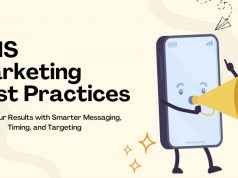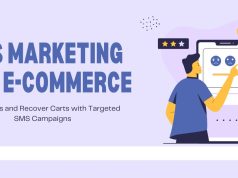SMS marketing has become one of the most direct and effective ways to reach customers instantly. With open rates exceeding 90% and response rates far surpassing email campaigns, text message marketing offers businesses an unparalleled opportunity to connect with their audience. This comprehensive guide will walk you through everything you need to know about implementing successful SMS marketing campaigns.
Understanding SMS Marketing Fundamentals
SMS marketing involves sending promotional or informational text messages directly to customers’ mobile phones. Unlike email marketing, which can sit unread in inboxes for days, text messages are typically read within minutes of delivery. This immediacy makes SMS marketing particularly powerful for time-sensitive offers, urgent notifications, and customer engagement.
The effectiveness of SMS marketing stems from its personal nature. Text messages arrive directly on the device people carry everywhere, creating an intimate communication channel between businesses and customers. However, this privilege comes with responsibility—SMS marketing must be used thoughtfully to maintain customer trust and comply with regulations.
Key Benefits of SMS Marketing
SMS marketing offers several compelling advantages over traditional marketing channels. First, the reach is extraordinary—mobile phones are owned by over 97% of Americans, providing access to virtually every demographic. Second, the engagement rates are unmatched, with most text messages being read within three minutes of delivery.
Cost-effectiveness represents another significant benefit. SMS marketing campaigns typically cost a fraction of traditional advertising while delivering superior engagement rates. Additionally, SMS marketing provides instant feedback, allowing businesses to measure campaign performance in real-time and adjust strategies accordingly.
Building Your SMS Marketing Foundation
Legal Requirements and Compliance
Before launching any SMS marketing campaign, understanding legal requirements is crucial. The Telephone Consumer Protection Act (TCPA) governs SMS marketing in the United States, requiring explicit consent before sending marketing messages. This means customers must actively opt-in to receive your messages—pre-checked boxes or assumed consent are not sufficient.
Compliance extends beyond initial consent. Every marketing message must include clear identification of your business and provide easy opt-out instructions. The standard “Reply STOP to unsubscribe” message satisfies this requirement, but businesses must honor opt-out requests immediately.
International businesses must also consider regulations like GDPR in Europe, which impose additional requirements for data protection and consent management. Non-compliance can result in significant fines and legal consequences.
Setting Up Your SMS Marketing Platform
Choosing the right SMS marketing platform is essential for success. Leading platforms offer features like contact management, automated campaigns, analytics, and integration with existing business systems. Popular options include Klaviyo, Twilio, and TextMagic, each offering different strengths depending on your specific needs.
When evaluating platforms, consider factors like delivery rates, pricing structure, customer support, and integration capabilities. The platform should easily connect with your existing CRM, e-commerce system, and other marketing tools to create seamless customer experiences.
Developing Your SMS Marketing Strategy
Building Your Subscriber List
Growing a quality subscriber list requires strategic thinking and compelling incentives. Successful businesses offer immediate value in exchange for phone numbers—exclusive discounts, early access to sales, or valuable content work well as incentives.
Multiple touchpoints can capture subscribers. Website pop-ups, social media campaigns, in-store promotions, and email signature links all provide opportunities to grow your SMS list. The key is making the value proposition clear and the sign-up process simple.
Quality matters more than quantity when building your list. Engaged subscribers who genuinely want to hear from you will generate better results than large lists of disinterested contacts. Focus on attracting subscribers who align with your target audience and business objectives.
Segmentation and Personalization
Effective SMS marketing relies heavily on segmentation and personalization. Generic messages sent to entire lists rarely achieve optimal results. Instead, segment your audience based on demographics, purchase history, engagement levels, and preferences.
Common segmentation strategies include geographic location, customer lifecycle stage, purchase frequency, and product preferences. For example, a retail business might segment customers by seasonal purchase patterns, sending winter coat promotions only to customers in cold climates.
Personalization extends beyond using customers’ names. Relevant product recommendations, location-based offers, and timing based on individual preferences all improve engagement rates. Advanced platforms can automate much of this personalization using customer data and behavioral triggers.
Crafting Effective SMS Messages

Message Structure and Best Practices
SMS messages have a 160-character limit, making every word count. Effective messages follow a simple structure: hook, offer, and action. The hook grabs attention, the offer provides value, and the action tells customers what to do next.
Clarity and urgency work well in SMS marketing. Messages like “Flash sale: 50% off all shoes today only. Shop now: [link]” combine clear value propositions with time-sensitive urgency. Avoid jargon, complex language, or unclear calls-to-action.
Timing significantly impacts message effectiveness. Research shows that messages sent between 10 AM and 8 PM on weekdays perform better than those sent early morning or late evening. However, timing depends on your specific audience and industry, so testing different send times is essential.
Types of SMS Campaigns
Different campaign types serve various business objectives. Promotional campaigns focus on driving sales through discounts, special offers, or new product announcements. These messages typically generate immediate responses but should be balanced with other content types to avoid overwhelming subscribers.
Transactional messages provide order confirmations, shipping updates, and appointment reminders. These messages have higher open rates because customers expect them and find them valuable. They also provide opportunities to include subtle promotional content.
Engagement campaigns focus on building relationships rather than immediate sales. These might include helpful tips, exclusive content, or behind-the-scenes updates. While they may not drive immediate revenue, they build long-term customer loyalty and brand affinity.
Advanced SMS Marketing Techniques
Automation and Triggered Messages
Automated SMS campaigns can significantly improve efficiency and customer experience. Welcome series for new subscribers, abandoned cart reminders, and birthday messages all work well as automated campaigns. These messages feel timely and relevant because they’re triggered by specific customer actions or dates.
Drip campaigns nurture leads and customers over time. For example, a fitness business might send a series of workout tips to new subscribers, gradually introducing paid services. The key is providing value at each step while gently guiding customers toward conversion.
Behavioral triggers create highly relevant messaging opportunities. Customers who browse specific product categories, spend certain amounts, or haven’t purchased in defined timeframes can receive targeted messages designed to encourage specific actions.
Integration with Other Marketing Channels
SMS marketing works best when integrated with other marketing channels. Email and SMS campaigns can complement each other, with email providing detailed information and SMS offering immediate alerts and reminders.
Social media integration allows for cross-promotion and list building. Businesses can promote SMS sign-ups on social platforms while using SMS to drive social media engagement. This creates a cohesive marketing ecosystem that reinforces messaging across channels.
While television advertising reaches millions of consumers through broad programming, SMS marketing enables precise targeting and immediate engagement. The combination of TV’s mass reach and SMS’s personal touch can create powerful marketing synergies for businesses with sufficient budgets.
Measuring SMS Marketing Success
Key Performance Indicators
Tracking the right metrics is crucial for SMS marketing success. Delivery rates indicate how many messages successfully reach recipients, while open rates show engagement levels. Click-through rates measure how many recipients take desired actions, and conversion rates track actual business results.
Opt-out rates provide important feedback about message relevance and frequency. High opt-out rates might indicate too frequent messaging, irrelevant content, or poor targeting. Monitoring these rates helps maintain healthy subscriber lists.
Revenue per message and return on investment (ROI) ultimately determine campaign success. These metrics help justify SMS marketing budgets and guide future investment decisions. Most successful SMS campaigns generate ROI of 300% or higher.
Analytics and Optimization
Regular analysis of campaign performance reveals opportunities for improvement. A/B testing different message formats, send times, and offers helps optimize results. Even small improvements in open rates or conversion rates can significantly impact overall campaign performance.
Seasonal patterns often emerge in SMS marketing data. Understanding when your audience is most responsive helps with campaign planning and budget allocation. Many businesses see higher engagement during specific times of year or days of the week.
Customer feedback provides valuable insights beyond basic metrics. Surveys, reviews, and direct responses help understand how customers perceive your SMS marketing efforts and what improvements they’d like to see.
Common SMS Marketing Mistakes to Avoid

Frequency and Timing Errors
One of the most common mistakes in SMS marketing is sending too many messages too frequently. While SMS has high open rates, overuse can quickly lead to subscriber fatigue and opt-outs. Most businesses find success with 2-4 messages per month, though this varies by industry and audience.
Timing mistakes can also harm campaign performance. Sending messages during inappropriate hours, holidays, or when customers are likely to be busy can create negative associations with your brand. Understanding your audience’s lifestyle and preferences helps avoid these pitfalls.
Poor Message Quality
Generic, irrelevant messages waste opportunities and annoy subscribers. Every message should provide clear value to recipients. Messages that feel like spam or don’t align with subscriber interests will likely generate opt-outs and negative brand associations.
Technical errors in messages can undermine professionalism and effectiveness. Broken links, incorrect information, or formatting issues create poor customer experiences. Always test messages before sending them to your entire list.
Maximizing Your SMS Marketing Impact
SMS marketing represents a powerful tool for businesses seeking direct, immediate customer engagement. Success requires understanding legal requirements, building quality subscriber lists, crafting compelling messages, and continuously optimizing based on performance data.
The key to effective SMS marketing lies in providing genuine value to subscribers while respecting their time and privacy. Businesses that master this balance can achieve exceptional results, with many seeing conversion rates and ROI that far exceed other marketing channels.
Start implementing these SMS marketing strategies gradually, focusing on compliance and subscriber experience first. As you build confidence and see results, expand your efforts with more sophisticated campaigns and automation. Remember that SMS marketing is a long-term strategy that requires patience, testing, and continuous improvement to achieve optimal results.
SMS marketing offers businesses a direct and personal way to engage customers, while e-commerce affiliate marketing provides a scalable method to drive sales through strategic partnerships. Learning how to effectively use both can help you build a well-rounded digital marketing strategy that boosts both reach and revenue.









